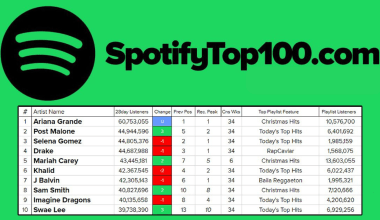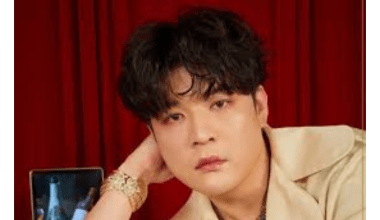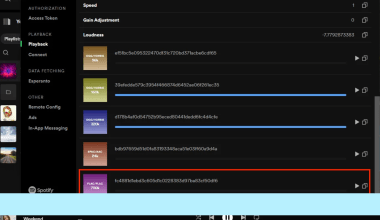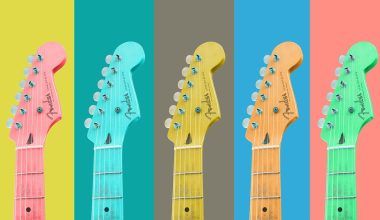If you’re a music lover, chances are you’ve come across the term “EP” before. But what exactly does it mean? In simple terms, an EP, or “Extended Play,” is a music release that’s longer than a single but shorter than a full-length album. It usually contains three to five tracks and is a great way for artists to showcase their work without committing to the full production of an album.
EPs have become increasingly popular in the music industry, serving as a creative and practical tool for artists to connect with their audience. In this blog, we’ll dive deep into what makes an EP special, how it’s used, and why it’s so important for both new and established musicians. Whether you’re a casual listener or an aspiring artist, you’ll find plenty of valuable insights here.
The History of EPs
To truly understand the significance of an EP, let’s take a step back and explore its origins. The term “Extended Play” originated in the 1950s, during the era of vinyl records. Back then, EPs were a step up from singles, offering more content without the hefty price tag of a full album. They were particularly popular in genres like rock ‘n’ roll and jazz, where fans craved more music but didn’t always have the budget for an album.
Fast forward to today, EPs have evolved to suit the digital age. With streaming platforms like Spotify and Apple Music, artists can easily release shorter collections of songs to gauge audience reaction and build momentum. The EP format has remained a staple in the industry because of its versatility and accessibility.
Why Do Artists Release EPs?
One of the biggest questions people ask is, “Why release an EP instead of a full album?” The answer lies in its flexibility. Here are some key reasons why artists opt for EPs:
1. Testing the Waters
For new artists, releasing an EP is a low-risk way to introduce their music to the world. It’s an opportunity to experiment with different styles and see what resonates with listeners.
2. Budget-Friendly
Producing a full album can be expensive and time-consuming. An EP allows artists to create high-quality music without breaking the bank.
3. Building Hype
EPs are perfect for creating buzz. They act as a teaser, keeping fans excited while the artist works on a full-length album.
4. Creative Freedom
Unlike albums, which often follow a specific theme or narrative, EPs give artists the freedom to explore various ideas without constraints.
How Do EPs Differ From Albums and Singles?
At first glance, the differences between EPs, albums, and singles might seem minor, but they’re quite significant. Here’s a quick breakdown:
- EPs: Typically 3-5 songs, around 10-25 minutes long. It’s a middle ground between a single and an album.
- Albums: Usually contain 8-15 songs, often exceeding 30 minutes in length. Albums are more comprehensive and often follow a specific theme.
- Singles: Consist of one or two songs, focusing on a specific track that’s meant to be a hit.
Understanding these differences helps artists choose the best format for their creative and professional goals.
The Role of EPs in Today’s Music Industry
In the fast-paced world of music, EPs have become more relevant than ever. With shorter attention spans and the rise of streaming, audiences are drawn to easily digestible content. Here’s how EPs fit into the modern music landscape:
1. Adapting to Streaming Trends
Streaming platforms prioritize frequent releases. By dropping an EP, artists can stay in the spotlight without the long gaps that often come with album production.
2. Catering to Niche Audiences
EPs allow artists to experiment with niche genres or themes, catering to specific audience segments without alienating their broader fanbase.
3. Collaboration Opportunities
Many EPs feature collaborations with other artists. This not only expands the artist’s reach but also brings fresh ideas to the table.
Famous EPs That Made an Impact
Some of the most iconic music releases started as EPs. Let’s look at a few examples:
- The Beatles – “Long Tall Sally”: Released in 1964, this EP showcased the band’s versatility and energy.
- Nirvana – “Blew”: Before “Nevermind,” Nirvana’s EP gave fans a taste of their grunge sound.
- Billie Eilish – “Don’t Smile at Me”: This EP catapulted Billie to fame, setting the stage for her Grammy-winning career.
How to Create an EP as an Artist
If you’re an aspiring musician, creating an EP can be an exciting yet daunting task. Here are some tips to get started:
1. Define Your Vision
Decide on the purpose of your EP. Is it to introduce your music, explore a new genre, or build anticipation for an album?
2. Choose the Right Tracks
Select songs that complement each other. Aim for a mix of variety and cohesion.
3. Keep It Concise
Remember, an EP isn’t an album. Focus on quality over quantity.
4. Invest in Good Production
Even if you’re on a budget, prioritize professional recording and mixing. A polished sound makes all the difference.
5. Promote Your EP
Leverage social media, streaming platforms, and live performances to spread the word.
Conclusion: Why EPs Matter
EPs are more than just a stepping stone for artists; they’re a powerful tool for creativity and connection. Whether you’re a fan discovering new music or an artist looking to make your mark, the EP format has something to offer everyone.
For further reading, explore these related articles:
- The Evolution and Vibrance of the Indian Music Industry
- Zee Music Company Owner: Shaping the Sound of India
For additional resources on music marketing and distribution, visit DMT Records Private Limited.






